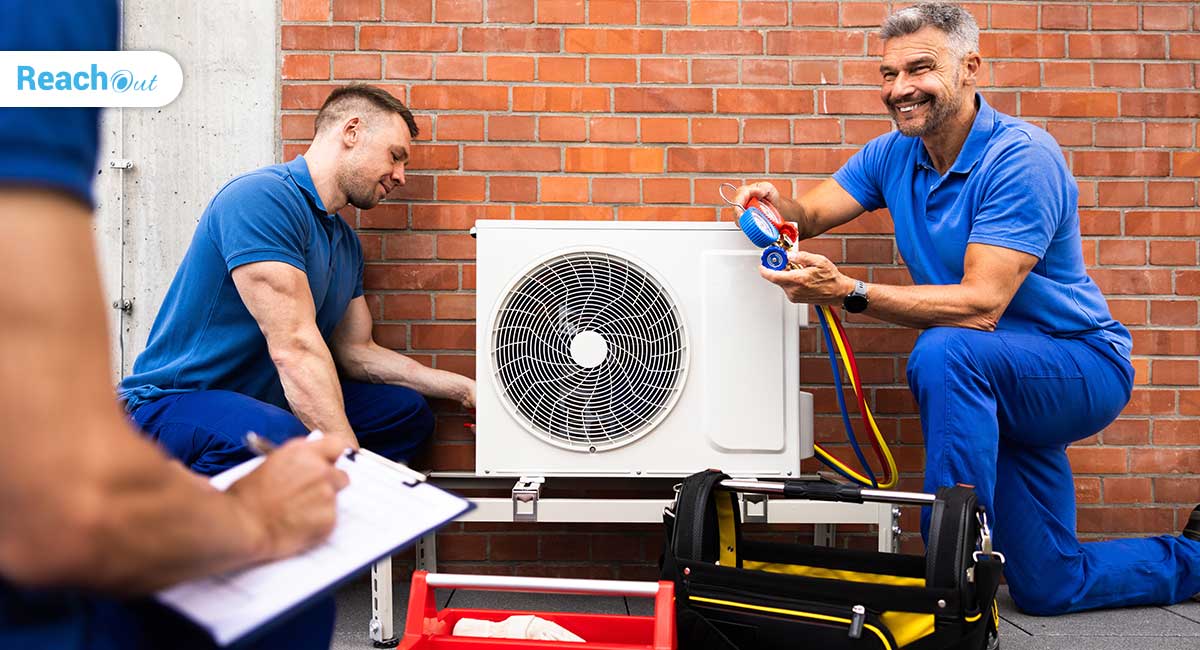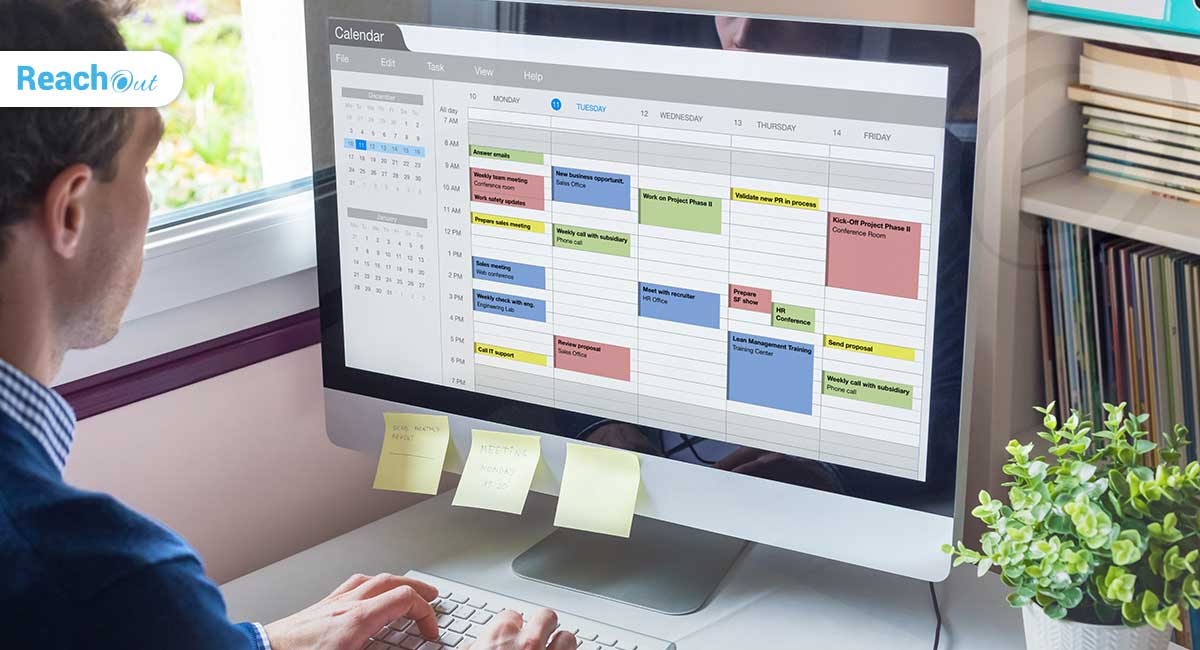
A Guide to Effective High-Quality Installation Management
An ideal installation management checklist guides the installation of equipment. It offers clarity on product and packaging requirements, lists on-site tests and checks, details potential defects, and communicates any special needs to the installation staff. ReachOut’s installation management software for equipment and service installations offers a plethora of features for your field crew to complete their jobs by adhering to procedural guidelines. Along with the software, it’s advisable to use an installation management checklist to make your installation job a cakewalk.
Here are the core components of an installation management checklist. Use these pointers to frame relevant questions appropriate for the type and nature of the installation.
Read more: How a field service software benefits security and CCTV installation companies
 1. Packaging
1. Packaging
The first step in effective installation management is ensuring the integrity of the packaging and the parts. Defective packages may cause damage during transit. Even minor damage to the installation jig can degrade the quality of the installation big time.
Verify these:
- The package has proper, original seals.
- The packages have proper paddings and assortments optimal for the product. Optimal mixtures depend on the type of product. For instance, fragile items need cushioning for protection.
- The cables that come with the packages are grouped using flush-cut tie-wraps or Velcro.
Any defect in packaging raises a red flag. It necessitates a thorough inspection of the package contents and possible replacement.
2. Equipment Parts
After unboxing, verify the physical inventory for completeness. It is impossible to complete the installation without all parts in place.
Make sure the installation package comes with:
- Parts: Ensure the availability of equipment or parts assigned to the project. Make sure weight and dimensions sync with the specifications prescribed by the manufacturer or the supplier.
- References: Gather all the supporting drawings and installation manuals, including work order and contracts, making explicit the project scope.
- Labeling: Ensure labeling is present for parts and cables, as per the drawings. Many enterprises underestimate the importance of accurate labels and markings. In industries such as electronics, precise labeling is an essential regulatory compliance requirement.
The checklist’s objective is to ensure all parts and resources are in place before starting the installation. If any part or instruction is not available, the field team will have to ensure it reaches the site at the right time without holding up the installation.
Read more: Top 10 Digital Inspection Forms From ReachOut to Supercharge Your Business
 3. On-site product tests and checks
3. On-site product tests and checks
An effective inspection management checklist clears up confusion related to quality controls. The installation management system covers on-site product tests and checks. Good checklists cover:
- On-site tests. After unpacking the equipment, conduct the necessary on-site tests to ensure product integrity. The type of tests depends on the type and nature of the part. For instance, charge the parts with electric wires to check for breaks in the wiring. The procedure and result tolerances may vary from product to product and among different suppliers. Set the product installation software to the correct tolerance limits. Consider the variation in tolerance among various suppliers.
- Material quality: The nature of quality checks depends on the equipment and material. For instance, when installing stainless steel conduits, quality depends on the conduit’s zinc coating’s thickness. When installing cloth materials, the quality depends on the ratio of cotton to polyester. The quality of injection-molded spoons depends on the product not having any sharp edges.
- Parts alignment: Rack-mount transmission, monitors, camera, and screens. Provision for power sources. Ensure all mounts and clamps are in place. Make sure insulators cover cable shields.
- Connectivity: Configure any wireless or other connections in the installation. Set the correct frequency, change default factory settings, and align the antenna distribution.
- Color: An often underestimated factor of quality is color. Make sure the color of the pieces matches the specifications. Verify the color by comparing it against an approved sample.
Classify defects into minor, major, and critical. Offer action plans to resolve the deficiencies.
4. Supporting infrastructure
The successful installation of any machinery requires supporting infrastructure. Make sure the installation management checklist factors the following:
- Accessories: Most machinery installations require wall screws and connection plates. Ensure that provisions are made for the same and are robust, plumb, and square to prevent shakes.
- Anchorages: Robots move fast. Equipment installation that features robots requires sturdy anchorages to stay steady. Check if the equipment package contains anchors, if not provision for it.
- Ventilation: Provision for adequate ventilation in the room where the installation takes place. Clarify if the equipment needs any out-of-the-ordinary environmental conditions required for the equipment. Equipment that generates heat may need air-conditioning or coolers. Many pieces of equipment need a pollution-free environment.
- Power: Refer to the supplier manual for electrical requirements and provision for the same. Make available the cables required.
- Water: If the equipment requires water connection, provision for the same.
- Floor: Certain heavy equipment requires specific floor thickness. Provision for floor reinforcement, if needed.
- Tools: Provision for the tools required for the installations. Tools encompass heavy-duty devices such as cranes or forklifts to fundamental tools such as spanners. The list of tools depends on the equipment.
5. Workforce
The success of any installation depends on the personnel who execute the actual tasks. Hire resources with the skills required for the equipment installation before committing to it. Installation of equipment is a precision task. Any confusion on the field could result in faulty installations or costly equipment crashing to the ground. Confirm the following before starting the job:
- To ensure job clarity and avoid confusion, brief all crew members about their tasks.
- Schedule training sessions for all operators and maintenance personnel, as required. Do a skill-gap analysis, if needed, to identify potential gaps in skills.
- Supply the workforce with safety and personal protection equipment (PPE), such as helmets, gloves, goggles, masks, crotch guards, sanitizers, and anything else, as needed. Make sure the workers wear their safety and PPE gear when at work.
Download our free guide: Does your firm have a compliance checklist in place to address fire safety concerns at your client premises? Click here to download!
Many suppliers offer factory acceptance tests to familiarize the workforce with the equipment. These tests provide an opportunity to clear installation glitches.
Deliver the checklist through installation management software. The best installation management software covers all bases. Installation supervisors and inspectors may access it through smartphone apps.
A well-oiled installation management system ensures the smooth functioning of the machinery. But effective installation is just the first step in delighting the customer. Get information from the supplier of the equipment about preventive maintenance. Also, schedule a preventive maintenance drive after the installation.
ReachOut’s field service management software offers extensive support for managing your equipment installation works. Contact us to understand how ReachOut can improve your operational efficiency and bottom line.
Aarathy
With over a decade of experience in the technology sector, Aarathy is passionate about improving field service efficiency through digital innovation. She is particularly interested in topics such as field service trends, service automation, and strategies for implementing digital transformation in service management.
More posts by Aarathy



